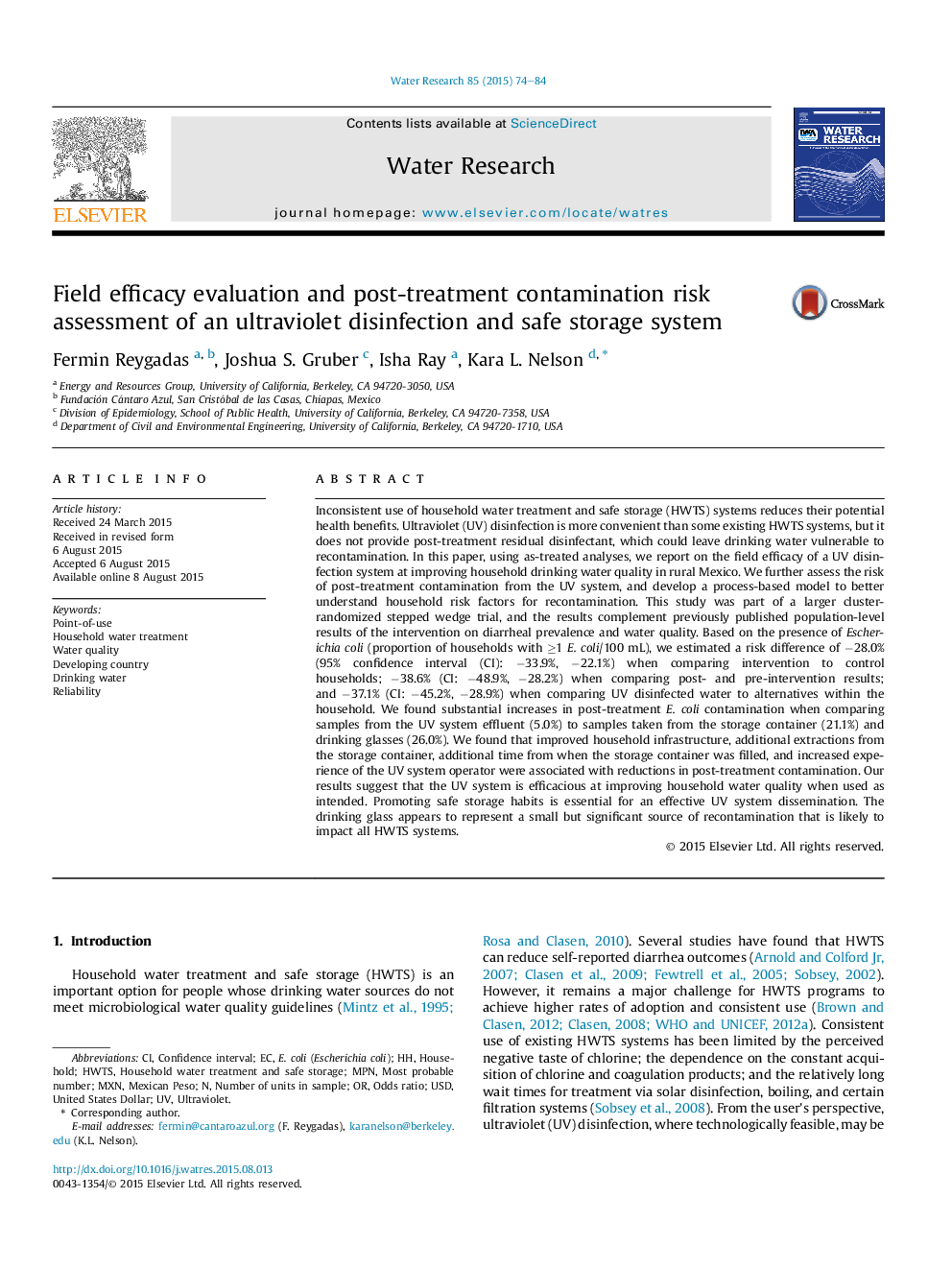| کد مقاله | کد نشریه | سال انتشار | مقاله انگلیسی | نسخه تمام متن |
|---|---|---|---|---|
| 6365824 | 1623083 | 2015 | 11 صفحه PDF | دانلود رایگان |
- We evaluated the field efficacy of a household UV water disinfection system.
- UV treatment and safe storage reduced the risk of Escherichia coli contamination.
- The quality of UV-treated water was equivalent to that of garrafon-bottled water.
- Some recontamination occurred during storage and from the drinking glass.
- We used a process-based model to identify strategies to reduce recontamination.
Inconsistent use of household water treatment and safe storage (HWTS) systems reduces their potential health benefits. Ultraviolet (UV) disinfection is more convenient than some existing HWTS systems, but it does not provide post-treatment residual disinfectant, which could leave drinking water vulnerable to recontamination. In this paper, using as-treated analyses, we report on the field efficacy of a UV disinfection system at improving household drinking water quality in rural Mexico. We further assess the risk of post-treatment contamination from the UV system, and develop a process-based model to better understand household risk factors for recontamination. This study was part of a larger cluster-randomized stepped wedge trial, and the results complement previously published population-level results of the intervention on diarrheal prevalence and water quality. Based on the presence of Escherichia coli (proportion of households with â¥1 E. coli/100 mL), we estimated a risk difference of â28.0% (95% confidence interval (CI): â33.9%, â22.1%) when comparing intervention to control households; â38.6% (CI: â48.9%, â28.2%) when comparing post- and pre-intervention results; and â37.1% (CI: â45.2%, â28.9%) when comparing UV disinfected water to alternatives within the household. We found substantial increases in post-treatment E. coli contamination when comparing samples from the UV system effluent (5.0%) to samples taken from the storage container (21.1%) and drinking glasses (26.0%). We found that improved household infrastructure, additional extractions from the storage container, additional time from when the storage container was filled, and increased experience of the UV system operator were associated with reductions in post-treatment contamination. Our results suggest that the UV system is efficacious at improving household water quality when used as intended. Promoting safe storage habits is essential for an effective UV system dissemination. The drinking glass appears to represent a small but significant source of recontamination that is likely to impact all HWTS systems.
Journal: Water Research - Volume 85, 15 November 2015, Pages 74-84
